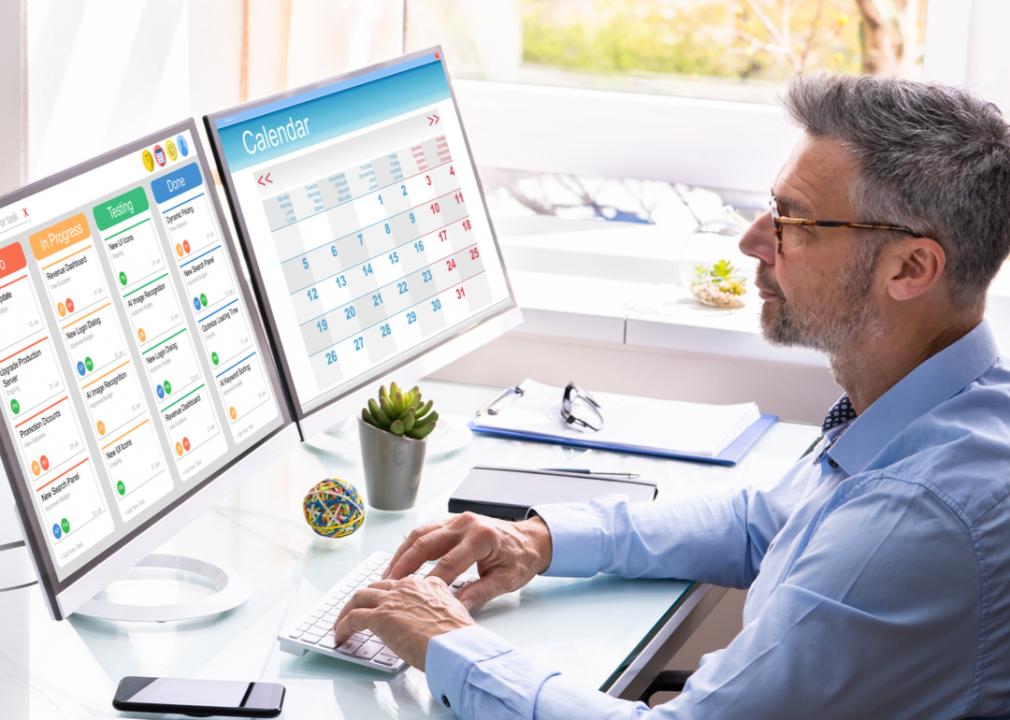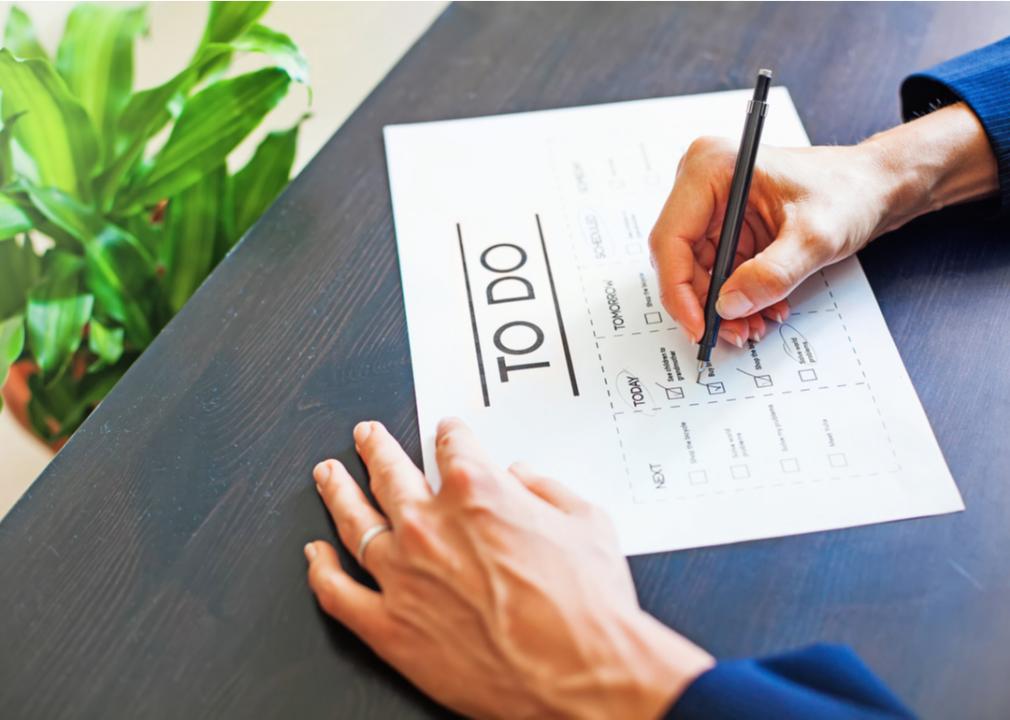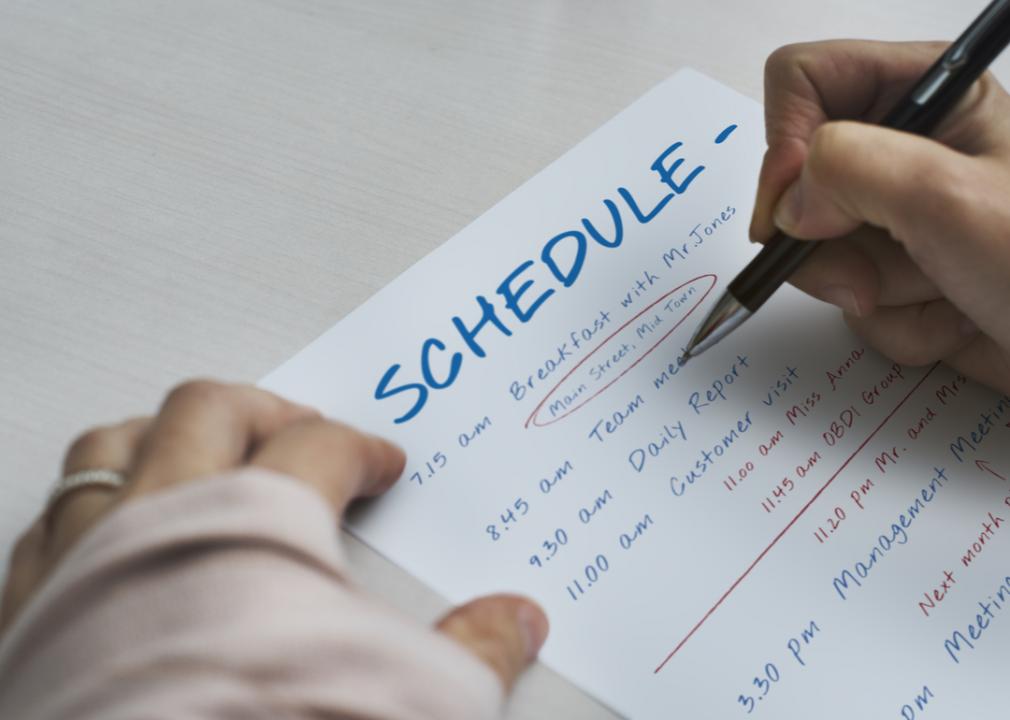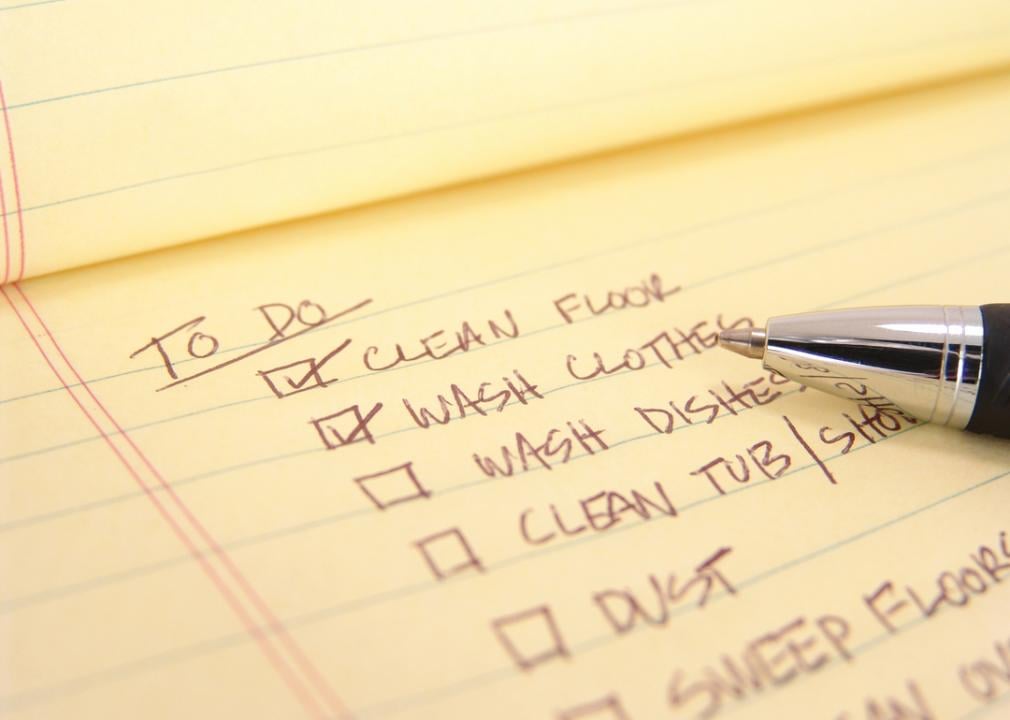10 tips to beat your to-do list

Melinda Fawver // Shutterstock
10 tips to beat your to-do list
Life is busy. With home and work constantly requiring attention, it is often hard to figure out what to tackle first and how to balance it all. Making a to-do list can be helpful. While to-do lists are a great tool, 41% of items on these lists are never completed, according to The Busy Person’s Guide to the Done List: The Science of Small Wins, from iDoneThis and author Bailey Adams. If not handled correctly, to-do lists can turn into failure lists, which actually decreases productivity and morale.
To help create and manage your to-do list, Persona Talent compiled a list of tips to tackle your to-do list using a variety of online sources related to productivity and workflow management.
Figuring out how you work can be the first step toward creating a manageable to-do list. Are you a paper-and-pen person who enjoys checking off boxes or crossing off finished tasks? Or are you a techie who enjoys finding the perfect app to record all those important tasks? Deciding the best method for you will go a long way to making sure that you stick with your to-do list and use it to increase productivity.
There are so many agendas for managing tasks from personal planners to digital apps. Personal paper planners normally come in daily planners and formats that show entire weeks or months at a glance and also include appointment times at 15- or 30-minute intervals. Digital apps offer many options for creating and maintaining a to-do list. With a few mere keystrokes, you can color-code, add reminders, or seamlessly redistribute tasks on the list.
With so many people working from home since the pandemic began, life has changed both on the home and work fronts. Working from home can be difficult because it can blur the line between work and home life. Maintaining a balance between work and home has become even more important and impacts mental health. To-do lists can be an essential tool in maintaining this balance by helping people to stay focused while working.
Whether you’re working from home or at the office, a to-do list remains a great way to decrease anxiety, increase productivity, and keep you on track—all of which contribute to overall well-being and a better workplace experience.
![]()

yougoigo // Shutterstock
Choose a way to track your list
While the simple act of writing up a to-do list is the first step, it is not the only step. Tracking your list helps keep you on task and provides an additional level of accountability. If you use a pen and paper list, crossing tasks off or checking them off is a great way to visually manage your to-do list. If you desire a more advanced method of tracking your list, there are digital apps that serve just that purpose. Tracking also helps because it shows exactly just how much you have done and can even motivate you to keep on going.

ABO PHOTOGRAPHY // Shutterstock
Prioritize tasks
Task prioritization is a way to organize tasks and is especially relevant because it allows you to focus on what’s important. It also allows you to allocate a sufficient amount of time to each task on your to-do list, and to make any changes to the list to save time and increase productivity. One way to prioritize is to highlight urgent tasks and to continually revise the to-do list by checking off completed high-priority tasks and then repeating the same process. Off-loading certain tasks and saying no to low-value tasks that contribute more to busyness than actual productivity at work can help when prioritizing tasks. According to one study by Harvard Business Review, another benefit to prioritizing important tasks versus those that have little value is that it frees up time for other things.

Andrey_Popov // Shutterstock
Categorize tasks or make sublists
Tasks can be categorized on separate lists, and you can create one list for work and one for home. Categorizing work or home tasks can be as simple as color-coding tasks by type or as involved as creating individual task categories and breaking those down by deadlines. Home tasks can be broken into inside tasks or outside tasks, and those categories can be further broken down. Once tasks are categorized, you can figure out what categories you will work on at specific times of the day. You may want to work on more complex tasks during the morning hours when your mind is fresher or later in the day when things have settled down at work. Sublists are also a great way to categorize to-do lists and break tasks down to make them more manageable.

Mila Supinskaya Glashchenko // Shutterstock
Determine deadlines
Deadlines are important because they help clarify how to order tasks and are an essential organizational tool. Those tasks due first should be listed at the top of the list, and as deadlines shift or change, shift them on the to-do list as well. Deadlines help employees work toward a common goal and set expectations about when deliverables are actually due. There are several digital apps that let you see what’s due over the course of days, weeks, and months, though it is important to not allow this information to overwhelm you but rather to use it to prioritize and reorder to-do lists based on task urgency. Determining deadlines also helps to plan out the work—and personal—week, which is a great strategy for time management.

Rawpixel.com // Shutterstock
Create concrete tasks and be specific
Simply writing down a bunch of tasks that aren’t specific or concrete can actually derail a to-do list and decrease productivity. Task specificity allows you to focus and achieve your daily, weekly, and monthly goals, which allows for increased productivity at work and at home. One study from Wake Forest University found that when you focus on a specific plan for one task, your performance on the next task improves. Being specific also helps to avoid confusion when it comes to tasks on a to-do list. Don’t write down the vague task as “read,” but rather write down the more concrete task of “read the first 50 pages.” Finally, remember projects are not tasks and should never be treated as such. Projects should be broken down into specific to-do list tasks.

Rawpixel.com // Shutterstock
Plan when to tackle items on the list
A to-do list is only effective if you plan out when to tackle items on it. Simply listing tasks without a plan on when you will do them won’t increase productivity and can cause confusion, which will actually dampen motivation and productivity. You can be as detailed as breaking tasks down by the exact hour you plan to complete them, or you can break them down by day or week. The important thing is to schedule the tasks on your to-do list as you would any appointments on your calendar and set aside enough time for each task. It may even help to understand what time of day you are most productive. If you are not a morning person and need a bit of time to get adjusted and motivated, scheduling simpler tasks for the morning, and more complicated tasks for the afternoon, may work best.

Vasin Lee // Shutterstock
Turn off social media notifications to eliminate distractions
Social media notifications are the to-do lists’ worst enemy. People are constantly pulled away from tasks by the constant buzz of notifications. During work, turning these distractions off can help you tackle and focus on the to-do list and increase productivity. One decade-old study on how distractions impact students found that students were only able to stay focused on a task for an average of 3 minutes and that most of the distractions came from technology. A 2018 survey by Branded Research Inc. found adults fall into the same trap, and that “75% of people admit that digital notifications lead to procrastination and decreased focus, and that individuals waste nearly an entire eight-hour work day’s worth of time checking notifications every week.” Not only do these notifications distract people from their to-do lists, but they also affect their well-being.

R. MACKAY PHOTOGRAPHY, LLC // Shutterstock
Track completed tasks
Tracking completed tasks helps to determine if you are completing tasks on time and meeting deadlines. It also helps you to figure out whether you are scheduling realistic and clear tasks. Tracking makes to-do lists more manageable by helping you to see what’s working and what isn’t. It can lead to revisions of your to-do list format, style, and execution, which bolsters productivity and efficiency. Tracking completed tasks also has a psychological benefit. Seeing completed tasks makes people feel good and can motivate them to stay on track and push forward with their to-dos.

GaudiLab // Shutterstock
Consider sharing your list
Sharing your to-do list may seem a bit strange at first, but it offers many advantages. Not only does sharing your list give you a bit more accountability toward your progress, but it also helps you to rethink how your list is written. By allowing more eyes on your list, you open yourself—and your list—up to advice from others who may have different experiences and skills that will help you carry out and finish the tasks on your list. It also allows for a more collaborative process with other team members at work, which can increase productivity for the entire team. Many digital apps allow for easy sharing of to-do lists, including Microsoft To Do.

Jacob Lund // Shutterstock
Create a new list after a certain time frame
Sometimes it is necessary to create a new to-do list. Often, the old list gets difficult to manage or read and simply becomes outdated. You can decide how often you would like to create new to-do lists. It may be best to create a new list when all tasks on your to-do list have been completed, or it may be best to take any unfinished tasks from a daily or weekly to-do list and add them to a new list along with any new tasks. Creating a new list also allows you to see if older tasks are still relevant, and to tweak them with new deadlines or urgency ratings and clearer language. Many digital apps allow you to clearly move and redistribute tasks to a new list.
This story originally appeared on Persona Talent
and was produced and distributed in partnership with Stacker Studio.